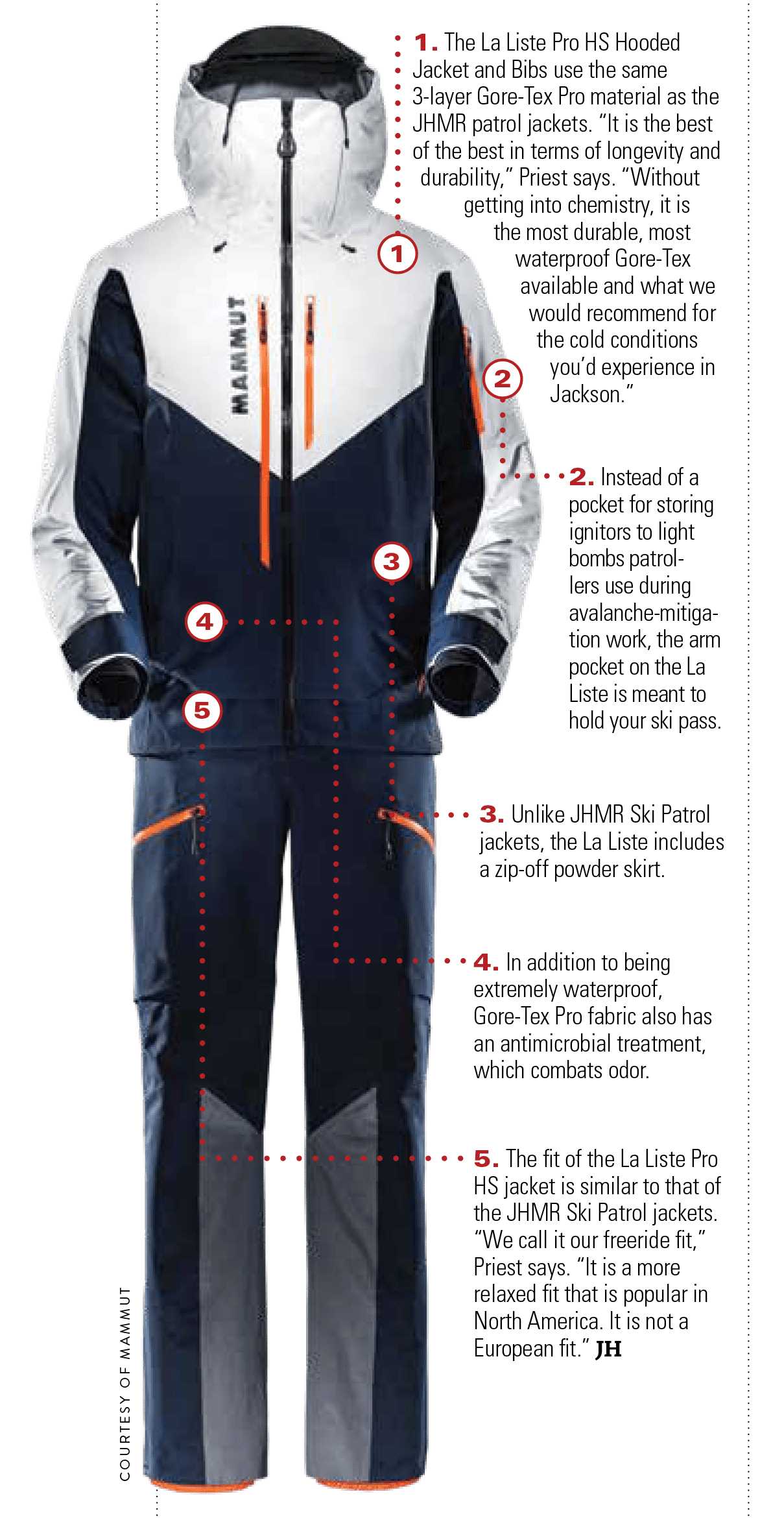Read The
Current Issue
A Match Made in the Mountains
Jackson Hole has gnarly mountain weather and extreme terrain. For 160 years, Mammut has designed equipment and clothing to keep people safe in the mountains. A new partnership between the two benefits both sides.
// By dina mishev
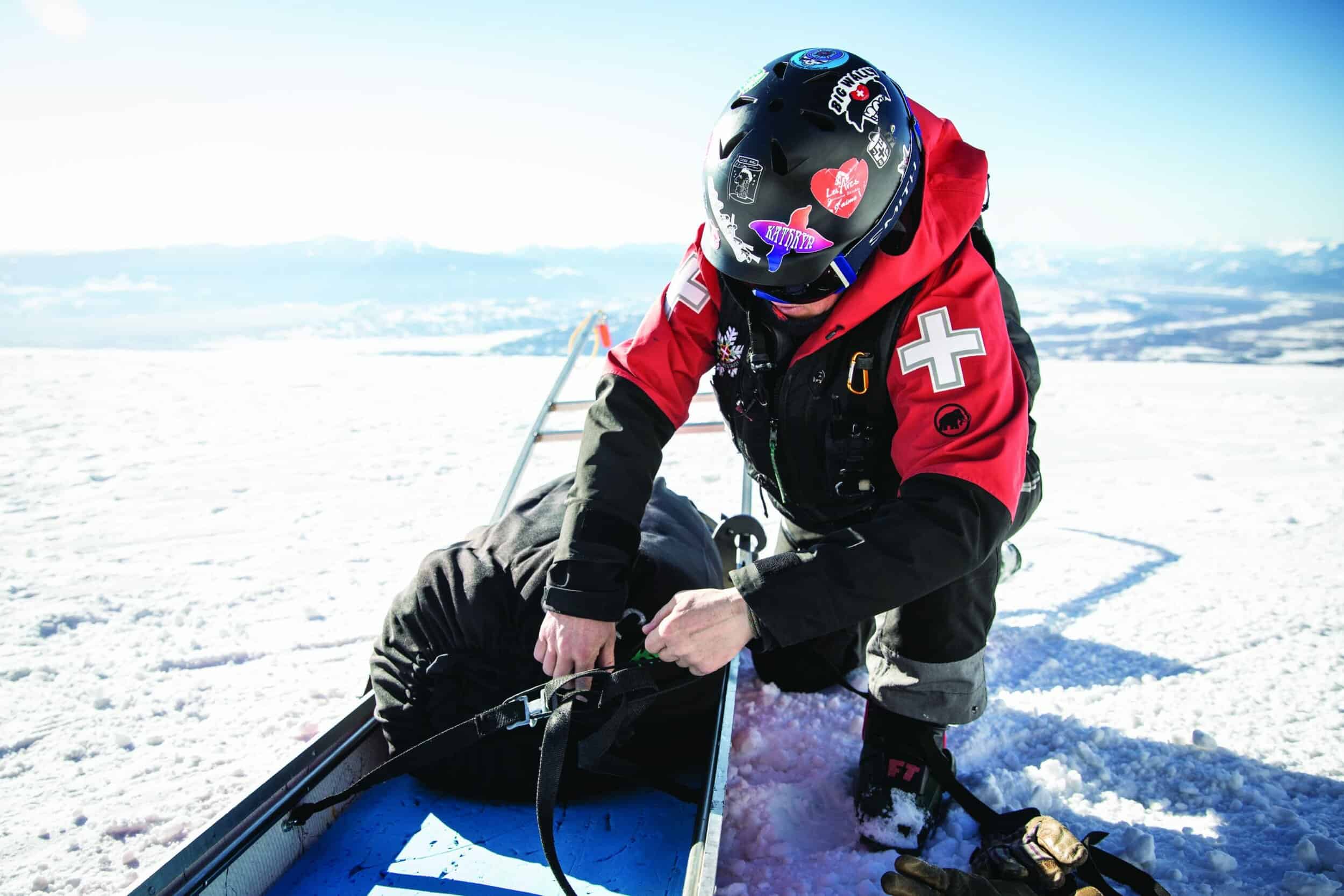
“Our staff—from patrollers down to lifties—are out in some crazy gnarly terrain and weather,” says Jess McMillan, senior events and partnership manager at Jackson Hole Mountain Resort (JHMR). “It’s of the utmost importance to keep them safe and dry.” Kris Kuster, general manager of the 160-year-old Swiss company Mammut, which makes mountain gear and technical clothing, says its goal is to “provide the best gear to all the staff and workers on the mountains and in the resorts and keep them safe, warm, and dry, so they are happy and protected in doing their job.”
Last winter JHMR and Mammut unveiled a partnership that has Mammut providing the safety equipment and uniforms for JHMR’s 2,000 employees, and JHMR’s employees providing design and use feedback to Mammut. “It’s a match made in heaven,” McMillan says. “We have terrain and weather that demands high-performance equipment and clothing, and Mammut has a reputation for making the best of the best.” Kuster says, “It’s extremely important to us that we’re continually evolving and learning. Working with the JHMR patrol and guiding teams helps ensure we’re not missing anything.”
To design the new uniforms, JHMR staff from different departments traveled to the company’s headquarters in Seon, Switzerland, to see fabrics, designs, and the factory, and Mammut designers traveled to Jackson Hole to experience the conditions in which JHMR’s employees work. “We were basically shooting for the most bulletproof, functional uniform they could come up with,” says Drew Kneeland, director of JHMR Ski Patrol, of the designs for the uniforms. Because the uniform needs of JHMR mountain guides are nearly identical to those of the resort’s ski patrol, the only difference between these uniforms is the color. Uniforms for other departments—the Mountain Sports School, lift attendants, and parking lot attendants—are suited specifically to the demands of those jobs. “What makes a great uniform for a ski patroller doesn’t work for a parking lot attendant and vice versa,” McMillan says. Across the departments, McMillan says a goal was to have the very best in terms of use and durability.
Doug Workman, a JHMR mountain guide and a Mammut ambassador since the early 2000s, when it was still little known in North America, says Mammut has always made high-quality products. With a closet full of Mammut, Workman says he’s started giving old pieces to his 15-year-old nephew. “He’s wearing and using pieces that are older than he is,” Workman says.
Let’s take a closer look at the Mammut/JHMR Ski Patrol uniform collaboration, which includes a custom jacket, vest, and pants; the Mammut avalanche airbag packs JHMR patrol and mountain guides use; and, for those who want outerwear as burly as JHMR Ski Patrol’s, the jacket in Mammut’s retail line that is most similar.
After JHMR ski patroller Mark “Big Wally” Wolling died in an avalanche while doing avalanche hazard-reduction work in the resort’s Cheyenne Bowl in 2010—he was buried beneath six feet of snow for about 10 minutes—the resort became the first in North America to require guides and patrollers to wear airbag packs as part of their uniform. Other North American ski resorts have followed JHMR’s lead—airbag packs had already been widely adopted at European resorts—and so have some recreational backcountry skiers.
Although the first airbag packs JHMR provided its patrollers and guides (in 2010) were not from Mammut, Mammut airbag packs were the first Mammut product that JHMR adopted (in 2018). “Different people use different Mammut models, but the universal thing is that they are some of the very lightest airbag packs on the market,” says JHMR guide and Mammut ambassador Workman.
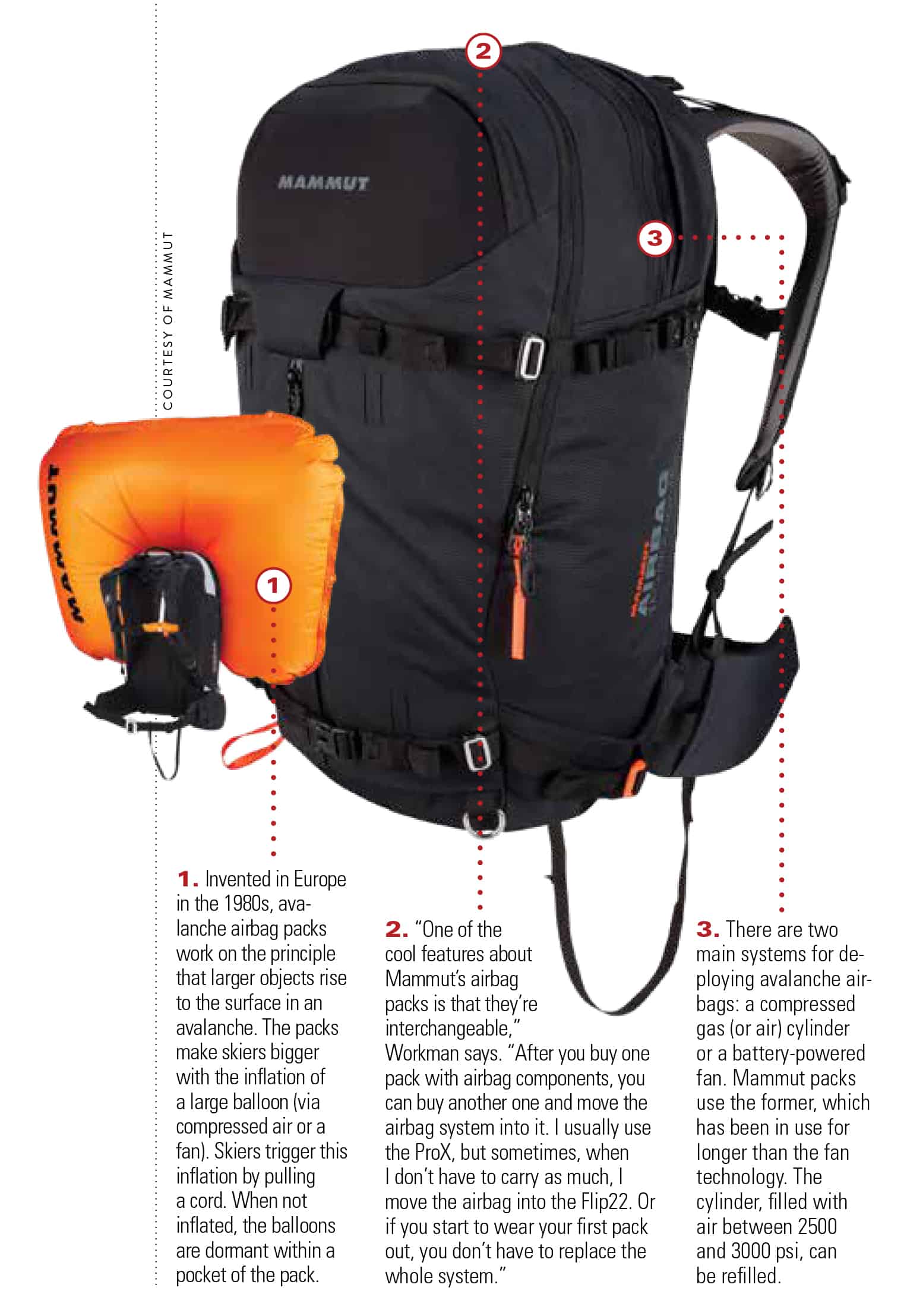
An Airbag Pack Saved My Life
—as told by Doug Workman,backcountry ski guide
After Big Wally died, a client of mine bought me an airbag pack and had it shipped to my house. It sat on my floor for a few days because I thought it was heavy and cumbersome. Finally, while guiding for High Mountain Heli, I started wearing it and, a few days later, I was caught in an avalanche. It was a bad avalanche—not so much because of the size, but because of the terrain I was in. I’m quite certain I would have been buried and that the clients would not have been able to come for me and there were no other guides in the immediate vicinity. Immediately, I didn’t think about the fact that I was wearing an airbag because it was so new to me. So, I was “swimming” [the long-recommended way to keep yourself on top of the snow] and then I ended up with a bunch of snow in my mouth. I was thinking the whole swimming thing was a crock of sh*^. It was like getting my ass kicked by George Foreman, like I was in the worst, most turbulent whitewater and I was trying to swim. Then I remembered I had the airbag on, and I reached for the trigger. It took me a couple of swipes to find it and when I pulled it, I instantly went right to the surface. When the snow stopped moving, I was sitting on the surface.
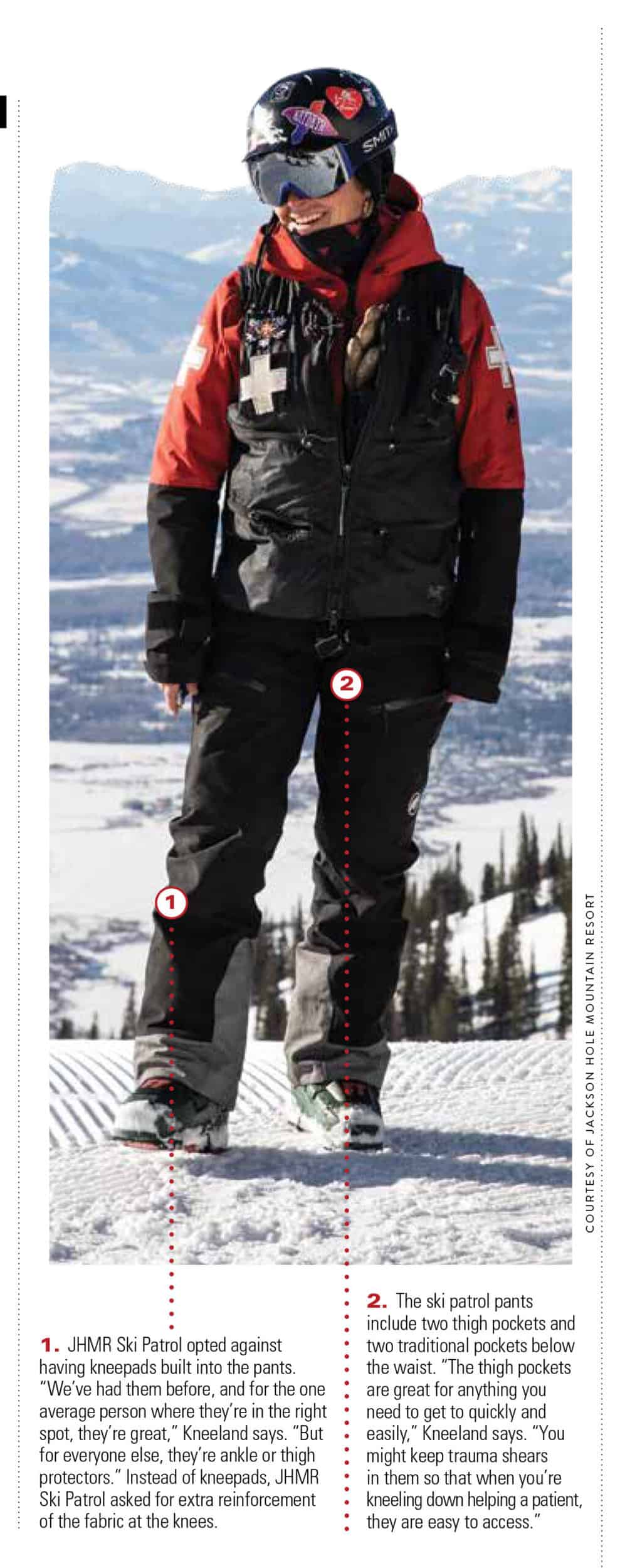
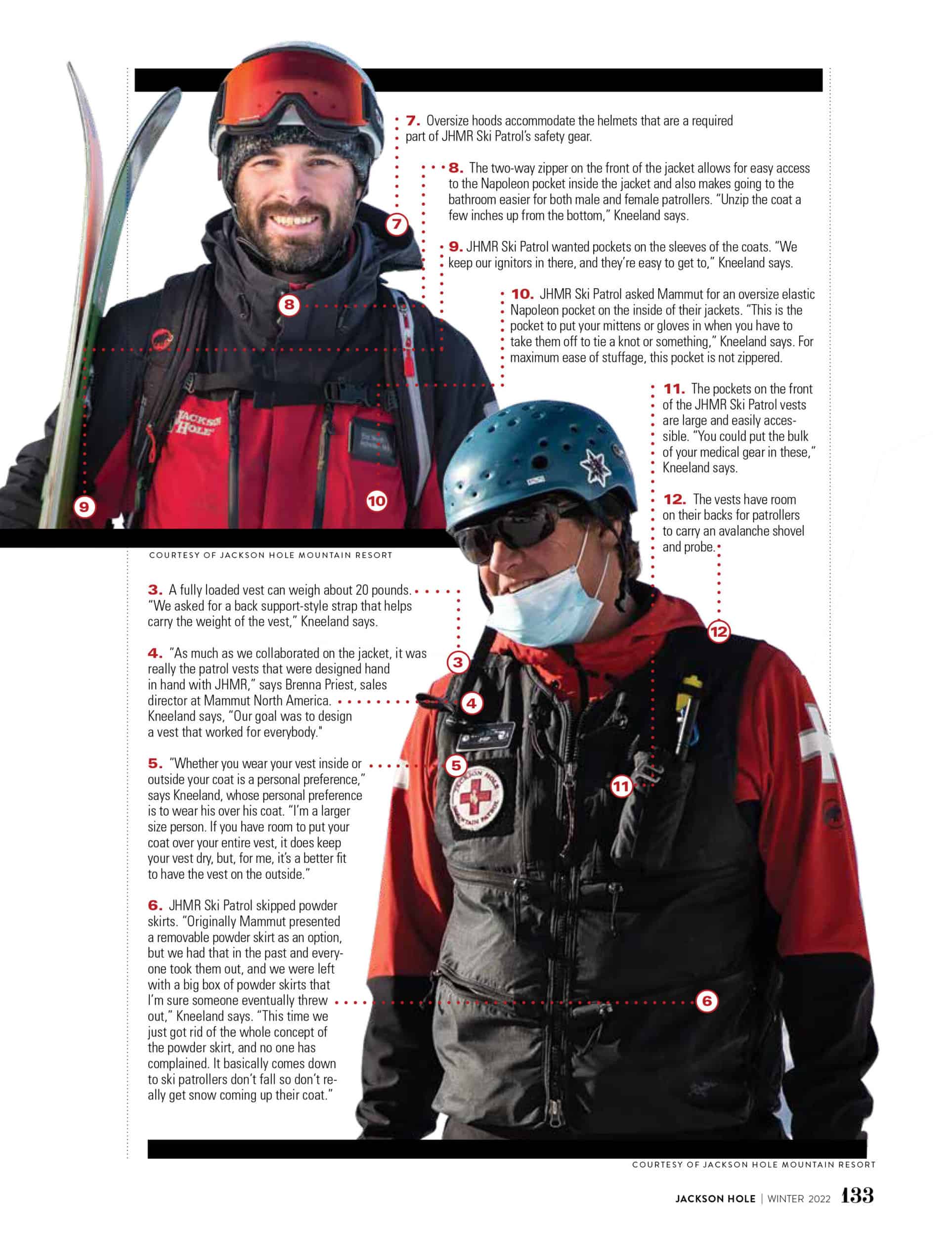
Mammut’s La Liste Pro HS Hooded Jacket and Bibs are the most comparable from a “technology feature set” to the uniforms worn by JHMR Ski Patrol and mountain guides, according to sales director Priest.
